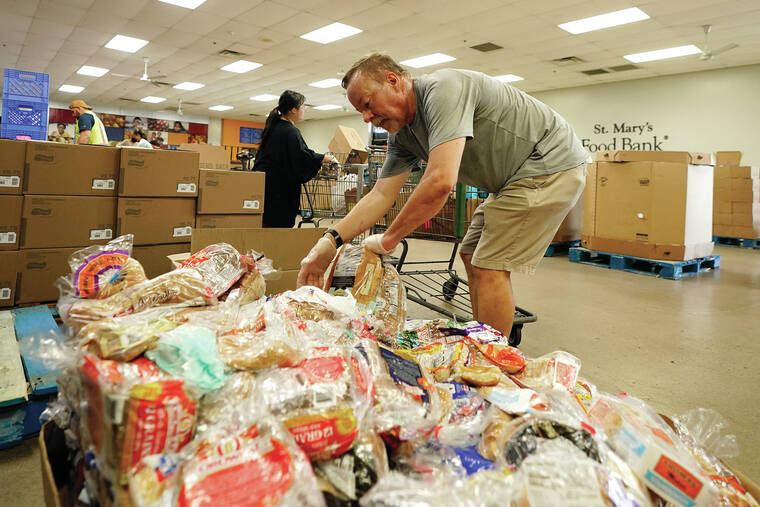Long lines are back at US food banks as inflation hits high
PHOENIX — Long lines are back at food banks around the U.S. as working Americans overwhelmed by inflation turn to handouts to help feed their families.
With gas prices soaring along with grocery costs, many people are seeking charitable food for the first time, and more are arriving on foot.
ADVERTISING
Inflation in the U.S. is at a 40-year high and gas prices have been surging since April 2020, with the average cost nationwide briefly hitting $5 a gallon in June. Rapidly rising rents and an end to federal COVID-19 relief have also taken a financial toll.
The food banks, which had started to see some relief as people returned to work after pandemic shutdowns, are struggling to meet the latest need even as federal programs provide less food to distribute, grocery store donations wane and cash gifts don’t go nearly as far.
Tomasina John was among hundreds of families lined up in several lanes of cars that went around the block one recent day outside St. Mary’s Food Bank in Phoenix. John said her family had never visited a food bank before because her husband had easily supported her and their four children with his construction work.
“But it’s really impossible to get by now without some help,” said John, who traveled with a neighbor to share gas costs as they idled under a scorching desert sun. “The prices are way too high.”
Jesus Pascual was also in the queue.
“It’s a real struggle,” said Pascual, a janitor who estimated he spends several hundred dollars a month on groceries for him, his wife and their five children aged 11 to 19. The same scene is repeated across the nation, where food bank workers predict a rough summer keeping ahead of demand.
The surge in food prices comes after state governments ended COVID-19 disaster declarations that temporarily allowed increased benefits under SNAP, the federal food stamp program covering some 40 million Americans.
“It does not look like it’s going to get better overnight,” said Katie Fitzgerald, president and chief operating officer for the national food bank network Feeding America. “Demand is really making the supply challenges complex.”
Charitable food distribution has remained far above amounts given away before the coronavirus pandemic, even though demand tapered off somewhat late last year. Feeding America officials say second quarter data won’t be ready until August, but they are hearing anecdotally from food banks nationwide that demand is soaring.
The Phoenix food bank’s main distribution center doled out food packages to 4,271 families during the third week in June, a 78% increase over the 2,396 families served during the same week last year, said St. Mary’s spokesman Jerry Brown.
More than 900 families line up at the distribution center every weekday for an emergency government food box stuffed with goods such as canned beans, peanut butter and rice, said Brown. St. Mary’s adds products purchased with cash donations, as well as food provided by local supermarkets like bread, carrots and pork chops for a combined package worth about $75.
Distribution by the Alameda County Community Food Bank in Northern California has ticked up since hitting a pandemic low at the beginning of this year, increasing from 890 households served on the third Friday in January to 1,410 households on the third Friday in June, said marketing director Michael Altfest.
At the Houston Food Bank, the largest food bank in the U.S. where food distribution levels earlier in the pandemic briefly peaked at a staggering 1 million pounds a day, an average of 610,000 pounds is now being given out daily.
That’s up from about 500,000 pounds a day before the pandemic, said spokeswoman Paula Murphy said.
Murphy said cash donations have not eased, but inflation ensures they don’t go as far. Food bank executives said the sudden surge in demand caught them off guard.
“Last year, we had expected a decrease in demand for 2022 because the economy had been doing so well,” said Michael Flood, CEO for the Los Angeles Regional Food Bank. “This issue with inflation came on pretty suddenly.”


